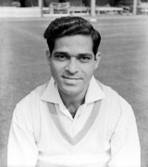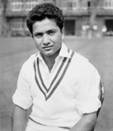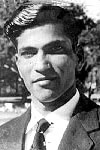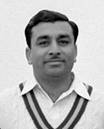
Gateway to East Africa

Indians, mostly from Punjab on the Uganda Railway Line (photo courtesy Charan Kundi)
Read
Indian labourers triumphed over warriors, lions to open up E Africa..Click
FACES, PLACES, FACTS AND TRIVIA – EAST AFRICAN RAILWAYS IN THE 1950’s & 1960’s (compiled by Tahir Mirza)...click here

Workers at Makindu station around 1900
I
Indian pioneers of East Africa - 'not much difference in living style of India' (sent by Pali Sehmi)

An Indian shopkeeper with family and his vintage car. (sent by Pali Sehmi)

An Indian cricket team - probably Mombasa or Dar-es Salaam (sent by Pali Sehmi)

An Indian hunter with his kill of man eating lions -somewhere on the Mombasa Nairobi route (sent by Pali Sehmi)
Read a very interesting ODE to the Indian Dukawalla by Kersi Rustomji
Read more on East Africa by Kersi Rustomji on http://www.openwriting.com/archives/jambo_paulo_jambo_mykoli/

German East African 50 rupee note 1905 (sent by Robin Grayson)

German East African 50 rupee note back side 1905 (sent by Robin Grayson)

A very rare One shilling note 1943 (sent by Pushpendra Shah of Haria Stamp Shop)

A 1949 20/- note (sent by Pushpendra Shah of Haria Stamp Shop)

One Rupee note in German East Africa & 5 Shilling East Africa note in 3 languages (English Arabic & Gujrati)

A 10/- shilling Queen Elizabeth 11 note

1973 -10/- note
MORE EAST AFRICAN CURRENCY & STAMPS (SENT BY RAJNI SHAH)..CLICK

SEE MORE EAST AFRICAN CURRENCIES (sent courtesy Raghbir Rahi Bains) CLICK HERE
The History of East Africa in Bank Notes
In the 19th century, a number of currencies were in use in East Africa. The most well known were the Theresean Dollar, the 'Cowries' (shells) from the Maldives. Nevertheless, because of the steadily increasing trade with India, these were replaced with the Indian Rupee in the second half of the 19th century. In 1890, the DOA (German East African Co.) affirmed its importance by requesting the German Govt., to produce German Silver Rupee. Through a number of financial reforms, this eventually led to the production of German Rupee notes in 1905. It is interesting to note that for the Germans it was no option to introduce German coins and notes. This, no doubt, was an official recognition of the importance of the Indian Rupee and, therefore, the Indian business community.
After the Germans lost the First World War, German Tanganyika became a British mandate. The British East African Currency board printed shilling notes in which the English, Arabic and Gujrati languages are in the forefront. Note that at that time there is no reference to Swahili yet. The formal money economy was considered to be non-African. (Courtesy -Asians in East Africa by G.Oonk)

Early Indian Anna stamps used in British East Africa (sent by Dhansukh Vaghela)

A letter sent to Switzerland from Kenya with the Kenya stamps (sent by Dhansukh Vaghela)

A 50 rupee revenue stamp with Queen Victoria

Stamps used in East Africa with King George VI

EA Stamp with Queen Elizabeth

A collection of stamps of East Africa during the Colonial Times

Kenya Stamps sent by Mukesh Mehta

Sent by Babu Shingadia

Anna (Indian currency)Stamps (Sent by Babu Shingadia)

A one cent stamp (Sent by Babu Shingadia)

A 2/- 1929 stamp (Sent by Babu Shingadia)

Universal Postal Union stamp (Sent by Babu Shingadia)

A rare stamp with the England Parliament (Sent by Babu Shingadia)

The King George VI stamp (Sent by Babu Shingadia)

A 50 cent stamp(Sent by Babu Shingadia)
More stamps sent by Babu Shingadia ..CLICK HERE
More stamps sent by Babu Shingadia ..CLICK HERE
More stamps sent by Babu Shingadia ..CLICK HERE

(Sent by Babu Shingadia)

First Day cover (Sent by Babu Shingadia)

First Day cover (Sent by Babu Shingadia)

Kenya's First day cover (contributed by Pushpendra Shah)
CLICK ON THIS TO SEE KENYA HELICOPTER PHOTO SAFARI
Ugandan Asians Then and Now: Coming to East Africa

Map of East Africa 1900. See Kisumu in Uganda Protectorate- the reason the Railway was named Uganda railways as Kisumu was supposed to be last station from Mombasa.
THE CHANGING CULTURE OF THE HINDU LOHANA COMMUNITY IN EAST AFRICA - COURTESY 'G.OONK'
Trust and Images in Indian business networks, East Africa -(Courtesy G.OONK)

PIO GAMA PINTO
A faithful son of Kenya who fought for the Independence of Kenya alongside great stalwarts like Mzee Jomo Kenyatta, Oginga Odinga, Koinange etc. Read his Biography by clicking on http://www.goacom.com/culture/biographies/gamapinto/ (sent by Archie Braganza)

Cyprian Fernandes is a Kenya-born journalist, among the first employed by the Nation Group of Newspapers. He was the paper's Chief Reporter. He began as a sports reporter and quickly moved to General News, Politics, Investigative journalism and social commentary.
........................................................
Have a look at this
In the world of Journalism, the contribution of Kul Bhushan is phenominal. He is another son of Kenya whose efforts and vast knowledge has made Kenya proud of the Asians.

Kul Bhushan
A former newspaper editor in Kenya for 30 years, Kul Bhushan worked as Media Advisor to a UN agency in Vienna and Delhi for ten years. He is also an author of over 30 books, a ghost writer of six books, a publisher, and a globe trotter who has visited over 50 countries and a calligrapher. Above all, he is a disciple of the enlightened master Osho for over 40 years. He lives in New Delhi and keeps on writing and publishing.
More at www.kulbhushan.net and www.newstechglobal.com

Photo of Kenya Factbook published by Kul Bhushan for 16 editions and presented to many heads of state including President Mzee Kenyatta, President Daniel arap Moi, Prime Minister Indira Gandhi and Chancellor Helmut Kohl, among other leaders, to present a dynamic profile of Kenya.

Indian Prime Minister receives Kenya Factbook from its editor and publisher, Kul Bhushan, during a meeting at her residence in New Delhi in 1976.
TOM MBOYA MURDER..(SENT BY KUL BHUSHAN)........CLICK HERE
-----------------------------------------------------------------

Captain Chani Chana's loyal cat admires her boss with the President (courtesy Chani) [to see Chani's profile -see Sikh Heritage in East Africa part 5]
======================================
SEE ANOTHER MWANAINCHI OF KENYA -"Saeed Cockar" - A SPORTSMAN IN EVERY RESPECT AND A PRIDE OF THE ASIAN COMMUNITY. (sent by Shafique Cockar

Advocate Saeed Cockar with General China (Mau Mau)


The tennis maestro

Saeed with HH the Aga Khan


Saeed with President Moi
READ MORE ABOUT SAEED COCKAR.....

Remember this gum? (available from Shah 'Kachri Chevda')


Nostalgic bubble gums (contributed by Pushpendra Shah

An envelop of Veena Art Studio, my father's photo studio on Grogan Road during the 50's

Envelope for Ilford Films for old cameras. Ilford products were available from Wardles Ltd. in Victoria Street, opposite the Fire Station during the 60's.
n
An old tobacco ad.

A Kenya Licence holder (sent by Ricky Riyat)
--------------------------------------------------------------------------------------------
READ ABOUT NAIROBI WEST AROUND 1959-SENT BY RAJNI SHAH AND TAHIR MIRZA- CLICK
----------------------------------------------
Strike at Highway Secondary School
sent by Tahir Mirza and Rahi Bains .........click
=====================================
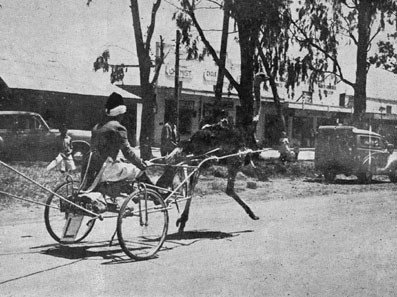
An ostritch driven cart on Government Road, Nairobi during the 1910/1920's

Mimi ni fasta kwa Simba - apana vesa kamata mimi ju ya Raleigh cycly. (sent by Tahir)

Rongo - mimi kusha kamata hio - (sent by Shaheen Yakub)

Poster for Humber bicycles (sent by Shaheen Yakub)

BSA Cycle Poster

Remember this Ford Zephyr?

WE used to drink from bottles.

This Nacet blade -if it could do this ,what can it do to your face?

Jamhuri High School magazine cover (sent by Pushpendra Shah)

Exercise book Jamhuri High School (Formerly Duke of Gloucester) (courtesy Pushpendra Shah)

Pupil's exercise book of Visa Oshwal School Ngara (courtesy Pushpendra Shah)

Helpful tables at the back of exercise books for convenience of pupils (courtesy Pushpendra Shah)

Exercise book for Highway Secondary School 1972 (sent by Pushpendra Shah)

Back cover with tables of above exercise book (sent by Pushpendra Shah)

Cover school book Kitale sent by Mukesh Mehta

Old type of ticket for East African Airways 1967 (courtesy Pushpendra Shah)

Back of East African Airways ticket (courtesy Pushpendra Shah)

Any recollection? (sent by Pushpendra Shah)
Hi Harjinder,
Well done for putting that site together, it brought back many memories of my growing up in Kenya.
In your miscellaneous section, you have a business card that was my late mother and step father’s:
Ray Robinson & Freddie Yowell Photographers in which you ask any recollection?
Well I certainly do have!:
Their studio was located in part of the same building as Jamil Habib’s car showroom (almost right opposite the ‘SNO-CREAM PARLOUR’), from whom they rented the space
They later moved to the Hurlingham shopping arcade.
I myself went to Nairobi Primary and then the Duke of York School, which was renamed Lenana School soon after I got there.
After leaving school, I got a job in the Hilton hotel’s Amboselli Grill playing bass in Chander Bahal’s band - ‘The Syllables’, before eventually leaving for London where I became a full-time professional musician.
I now live in Brazil with my Brazilian wife Dani and am still in the music business.
I have attached a press clipping from either the Nation or Standard newspaper that my sister in Australia recently dug out. The quality of the scan isn’t very good but feel free to use it if you wish (see below).
If you can read the article, please ignore my very misogynist comment about ‘girlfriends’, I can’t believe I would have said that I don’t like my women too intelligent!
Any questions, feel free to ask,
Regards,
Dave Yowell

Pity-the newspaper cut destroyed the movie info which would have been very interesting.

Studio One belonging to Kulwant Singh Warah, a sportsman and a gentleman

Ad 1972 - I remember eating batata vada here

Car Hire firm of Rehmans on Reata Road Nairobi 1959(sent by Roy Barratt)

Firms of Mohan Singh Soorae & Gurbux Singh Soorae1972

Bike shop opposite Jeevanjee gardens Ad1972

Belonging to one of my good friends Umed Singh Benawra

Ad 1972

Sent by Robin Grayson

Sent by Robin Grayson

Sent by Robin Grayson

Sent by Robin Grayson

Sent by Robin Grayson

Sent by Robin Grayson

Sent by Robin Grayson

Sent by Robin Grayson

Sent by Robin Grayson
S
Hand written receipt in 1959 (sent by Pushpendra Shah)

(sent by Pushpendra Shah)

(sent by Pushpendra Shah)

(sent by Pushpendra Shah)

(sent by Pushpendra Shah)

EAP&L Bill (sent by Pushpendra Shah)
V

A stub of Shan Cinema ticket in 1970 when the balcony was costing only sh.4/80 (sent by Pushpendra Shah)

Play - 'The Tempest' at Kenya National Theatre Nairobi (sent by Robin Grayson)

The Players of the play. Robin's sister as Ariel (sent by Robin Grayson)

The Grayson car with Betty Grayson & daughter Rosemary in 1935 (sent by Robin Grayson)

Two cheekie chappies in Muthaiga 1943 on left John Travis on right Robin Grayson. John is the reason I am known as my second name Robin as both parents called us John (sent by Robin Grayson)

An Interterritorial Pass used for travelling between the EA territories (sent by Robin Grayson)

1927 Car Licence (It was needed in those days also!!) (sent by Robin Grayson)

Same car licensed for driving 'SINGER' car (sent by Robin Grayson)




An early type of tailor shop in River Road, Nairobi (courtesy we came in dhows)
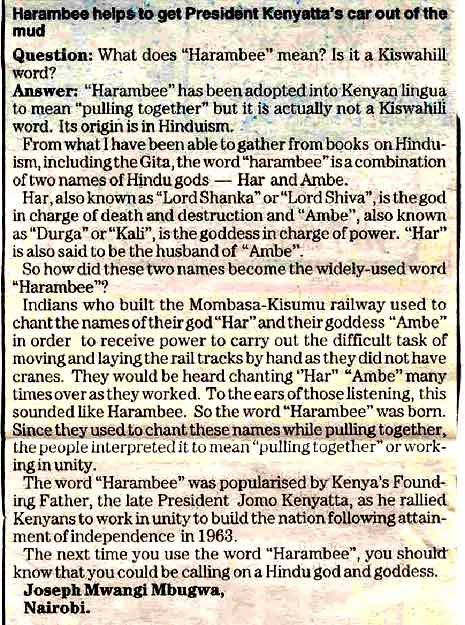
The meaning of 'Harambee'



The Lord Vishnu Group of H. Gokani in Nakuru when no Tv, cinema or radio was available (courtesy we came in dhows)

The Style of letter writing in those colonial days (Courtesy We came in dhows)
The following article is written by a Kenyan, Ted Malanda, in The Standard, September 7, 2009 edition. Malanda’s insightful writings are always a pleasure to read. His writings are some times “painful” to read for Africans, Indians and even the Brits but he always tells the “bitter” and “inconvenient” truth and makes them “digestible” by giving them a humorous touch. He always makes some very good points. His articles are usually short but to the point despite the touch of humour he inserts in them. This article is an example
I am sending this to the Indian diaspora from East Africa who will be able to relate to it.
Chandu Radia (through Push Shah)
Why the duka wallah is smarter than you
From the Standard on 07 Sept 09
By Ted Malanda
In the unlikely event that the British decided to rebuild the Kenya-Uganda railway, rest assured that the man-eaters of Tsavo, if they still exist, would not be carting away Indian coolies into the boondocks for snacks and dinner. There would be no Indian coolies in the first place. Instead, the whole railway line would be bustling with youthful — and not so youthful — indigenous Kenyans under the Kazi kwa Vijana initiative.
Yet just over 100 years ago, the locals wouldn’t be caught dead doing such ‘menial’ work, to the extent that the railway line’s entire labour force had to be shipped in from India.
But if it was massive muscle drain for India, then, rounding up the descendants of those coolies today and throwing them out Idi Amin style would result in brain drain so severe that the national economy would be clobbered to its knees. How did they manage this transformation from sweaty labourers to captains of industry when locals are still doing what they were doing then — hunting squirrels, pretending to raise maize on barren land and engaging in tribal warfare every five years?
Strength to strength
Equally, the Brits who were lording it over everyone have virtually scattered. Grogan is gone; Egerton’s castle is in ruins while Lord Delamere now hawks mandazi and milk on the roadside in Naivasha. But the Kenyan Indian just seems to grow from strength to strength.
I could hazard two reasons for this: One, the Indian doesn’t give a hoot about land. All he needs is a roof over his head and a place to sell his wares.
Wazungu, on the other hand, will lease thousands of hectares of desert land and then pretend to make money out of it from tourists. How the hell do you do that when crooks are turning all the trees upstream into charcoal?
Africans, on the other hand, will steal and kill each other for land. But after that, they do absolutely nothing with it apart from walking around admiring farm boundaries and selecting burial spots.
The second reason is that the average Indian is more tenacious than a donkey. Note: A millionaire muhindi duka wallah will own the same pair of shoes for years unlike a local man who changes wives with his first bank loan. It’s not easy minting money from a duka, either, as the many locals who sink their retirement benefits into roadside shops can testify.
But I admire Indians most for their marriage customs. They are just brilliant, these Indian men. How did they connive to have women pay them dowry and still manage to sit on them?
Aging mothers:
In fact, as soon as they have eaten the dowry that the bride brought, they install her in the family home so that she can take care of their aging mothers as well. Would you believe it!
And to seal the deal, they cover those women from head to toe making it virtually impossible for wife snatchers to salivate.
Have you ever seen an Indian woman’s underwear? Now contrast that with African women who seem hell bent on baring it all to the nearest passerby.
My ancestors thought they were smart yet all they cared about were useless gizzard rights. Why couldn’t they think up a scam like this? Here we pay dowry through the nose yet if one’s mother visits for two weeks, the wife issues an ultimatum: "Either that old hag goes or I’m out."
Life is, indeed, a circus!

A donkey cart used for delivering milk from dairy farms (1958)

The beauty of Africa

Shall I take his photo or run to the car?

Dead Elephant is scary no more - even for walking on it. (see Sikh with kachhehra)

A battle between a rhino and a chevvy-both got KO on Nairobi Mombasa Road
The car was owned and driven by a O.W. Paul of Mombasa. Once again if I am not mistaken he was an Insurance broker who was agent for the South African Mutual Assurance co. In an age when there were no seat belts nor airbags, it is a miracle that the driver was eventually able to walk away from the car, once he recovered from the stunning following the impact. (detail sent by Ameer Janmohamed)
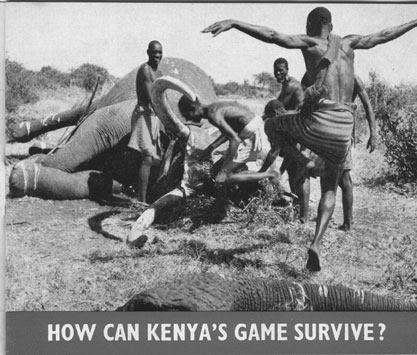
Poachers dance after a kill (1958)

DON'T YOU FORGET--- I AM STILL THE BOSS AROUND HERE!!!!

BEER overtaking Petrol (sent by Kenya Couk)

A typical Road in Kenya with passersby (sent by Kenya Couk)

Masai Warriors adorning the picturesque Kenya scenery (sent by Kenya Couk)

An North Province chief.

A Kawa (coffee) seller- a common sight in Mombasa

A very familiar sight on Nairobi streets was this Pathan-knife & scissor sharpner 1950's.(Photo courtesy http://www.mccrow.org.uk/eastafrica)

Shopping at wayside stall in Mombasa

Scenes around Ngulia Lodge 1985

Scenes around Ngulia Lodge 1985

Water hole at Ngulia Lodge 1985

Elephant at Ngulia lodge 1985

Giraffe near Ngulia Lodge 1985

The fauna of East Africa from Ngulia 1985

Picturesque road to Ngulia Lodge 1985

A typical road in East Africa

Kenya Cricket team logo for world cup 2011
TO SEE EXCELLENT PHOTOGRAPHY OF KENYA -CLICK HERE

The picturesque Taita Hills

The beauty of Masai Mara

The Mara River

Lake Baringo
The following scorecards and photos have been sent by Tahir Mirza for those cricket fans who enjoyed the visits of the Indian & Pakistani Cricket teams tours of East Africa.
Sunder Cricket Club (India) Visiting East Africa 1957
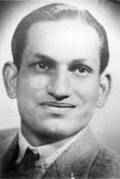 |
|
|
|
|
|
S Mushtaq Ali, (Captain) Batsman |
Pankaj Roy, Batsman |
M H (Vinoo) Mankad, All Rounder |
Nari Contractor (Batsman) |
Naren Tamhane, Wicketkeeper |
|
|
|||||
East Africa v Sunder Cricket Club |
|||||
7Sunder cricket Club in East Africa 1956 |
|
||||
Venue: Suleiman Virjee Indian Gymkhana Club Nairobi |
|||||
Balls per over: 6 |
|||||
Toss won by: Not Known |
|||||
Result : Sunder Cricket Club (India) won by 9 wickets |
|||||
East Africa First Innings |
Runs |
|
Sunder Cricket Club (India) First Innings |
Runs |
|||||||
c Amroliwala b Patel |
0 |
P Roy |
lbw Fernandes |
4 |
|||||||
R D Patel |
c Mankad b Patel |
2 |
N J Contractor |
b Jhalla |
32 |
||||||
M B Ronaldson |
c Roy b Patel |
2 |
H D Amroliwala |
c Dawson b Jhalla |
15 |
||||||
Ramanbhai Patel |
lbw Patel |
32 |
J M Ghorpade |
b Jhalla |
2 |
||||||
lbw Mankad |
83 |
M S Hardikar |
b Fernandes |
7 |
|||||||
Gursharan Singh |
b Mankad |
1 |
M H Mankad |
b Vasani |
45 |
||||||
c Amroliwala b Mankad |
10 |
P Bhandai |
lbw b Fernandes |
6 |
|||||||
run out |
44 |
S Mushtaq Ali |
b d’Cunha |
22 |
|||||||
c Ghorpade b Mankad |
13 |
N S Tamhane |
c Gafoor b d’Cunha |
67 |
|||||||
A Fernandes |
c Amroliwala b Mankad |
10 |
S Nyalchand |
c Gursharan b d’Cunha |
8 |
||||||
K Vasani |
did not bat |
0 |
J M Patel |
not out |
5 |
||||||
|
Extras |
7 |
|
Extras |
9 |
||||||
|
Total ( all out, 99.5 overs) |
217 |
|
Total (81.2 overs) |
222 |
||||||
Fall of Wickets: |
Fall of Wickets: |
||||||||||
|
|
||||||||||
Sunder Cricket Club (India) bowling |
Overs |
Mdns |
Runs |
Wkts |
East Africa Bowling |
Overs |
Mdns |
Runs |
Wkts |
||
J M Patel |
32 |
11 |
70 |
4 |
Fernandes |
25 |
4 |
68 |
3 |
||
24 |
8 |
53 |
0 |
Jhalla |
25 |
5 |
69 |
3 |
|||
M H Mankad |
30.5 |
8 |
58 |
5 |
Vasani |
20 |
2 |
47 |
1 |
||
Bhandari |
8 |
5 |
16 |
0 |
d’Cunha |
11.2 |
0 |
29 |
3 |
||
Hardikar |
5 |
0 |
13 |
0 |
|
|
|
|
|
||
East Africa Second Innings |
Runs |
|
Sunder Cricket Club (India) Second innings |
Runs |
|||||||
b Patel |
27 |
P Roy |
Not out |
75 |
|||||||
R D Patel |
b Patel |
10 |
N J Contractor |
c R D Patel b d’Cunha |
57 |
||||||
M B Ronaldson |
c Contractor b Mankad |
3 |
H D Amroliwala |
not out |
3 |
||||||
Ramanbhai Patel |
c and b mankad |
8 |
J M Ghorpade |
|
|
||||||
c Contractor b Mankad |
14 |
M S Hardikar |
|
|
|||||||
Gursharan Singh |
not out |
48 |
M H Mankad |
|
|
||||||
b Patel |
17 |
P Bhandai |
|
|
|||||||
st Tamhane b Mankad |
1 |
S Mushtaq Ali |
|
|
|||||||
c Contractor b Mankad |
7 |
N S Tamhane |
|
|
|||||||
A Fernandes |
c Contractor b Patel |
5 |
S Nyalchand |
|
|
||||||
K Vasani |
st Tamhane b Mankad |
7 |
J M Patel |
|
|
||||||
|
Extras |
0 |
|
Extras |
10 |
||||||
|
Total ( all out 77.4 overs) |
147 |
|
Total ( overs) |
145 |
||||||
Fall of Wickets: |
Fall of Wickets: |
||||||||||
|
|
||||||||||
Sunder Cricket Club (India) bowling |
Overs |
Mdns |
Runs |
Wkts |
East Africa Bowling |
Overs |
Mdns |
Runs |
Wkts |
||
J M Patel |
39 |
12 |
64 |
4 |
Fernandes |
16 |
1 |
48 |
0 |
||
5 |
0 |
19 |
0 |
Vasani |
10 |
1 |
34 |
0 |
|||
M H Mankad |
33.4 |
0 |
64 |
6 |
d’Cunha |
14 |
1 |
37 |
1 |
||
|
|
|
|
|
Dawson |
4 |
1 |
9 |
0 |
||
|
|
|
|
|
Gafoor Ahmed |
1 |
0 |
2 |
0 |
||
|
|
|
|
|
Ramanbhai patel |
5 |
0 |
5 |
0 |
||
Pakistan Cricket Team Visiting East Africa 1956
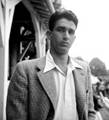 |
|
|
|
||
A H Kardar Captain |
Imtiaz Ahmed Wicketkeeper |
Hanif Mohammed Batsman |
Alimuddin Batsman |
Waqar Hasan Batsman |
|
|
|
|
|
||
Wallis Mathias Batsman |
Maqsood Ahmed Batsman |
Zulfiqar Ahmed off Spin |
Mahmood Husain Medium Fast Bowler |
Khan Mohammed Fast Bowler |
|
|
|||||
East Africa v Pakistan Cricket Writers' XI |
|||||
|
|||||
Venue: Sikh Union Club Ground, Nairobi |
|||||
Balls per over: 6 |
|||||
Toss won by: Not Known |
|||||
Result : Pakistan Cricket Writers' XI won by 8 wickets |
|||||
East Africa First Innings |
Runs |
|
Pakistan Cricket Writers' XI First Innings |
Runs |
|||||||
16 |
b Jhalla |
0 |
|||||||||
lbw b Zulfiqar Ahmed |
2 |
lbw b Jhalla |
45 |
||||||||
11 |
b Jhalla |
4 |
|||||||||
44 |
not out |
144 |
|||||||||
lbw b Zulfiqar Ahmed |
3 |
run out |
10 |
||||||||
not out |
37 |
b Jhalla |
7 |
||||||||
lbw b Mahmood Hussain |
11 |
c and b Jhalla |
0 |
||||||||
2 |
8 |
||||||||||
run out |
4 |
16 |
|||||||||
0 |
not out |
11 |
|||||||||
0 |
did not bat |
|
|||||||||
|
Extras |
17 |
|
Extras |
2 |
||||||
|
Total ( all out, 90 overs) |
147 |
|
Total (8 wickets, declared, 77.1 overs) |
247 |
||||||
Fall of Wickets: 1-17, 2-18, 3-70, 4-80, 5-92, 6-120, 7-135, 8-147, 9-147, 10-147 (90 overs) |
Fall of Wickets: 1-0, 2-4, 3-111, 4-129, 5-140, 6-?, 7-154, 8-216 |
||||||||||
|
|
||||||||||
Pakistan Cricket Writers' XI bowling |
Overs |
Mdns |
Runs |
Wkts |
East Africa Bowling |
Overs |
Mdns |
Runs |
Wkts |
||
15 |
9 |
20 |
3 |
|
29 |
2 |
95 |
7 |
|||
14 |
2 |
30 |
1 |
22 |
3 |
71 |
0 |
||||
40 |
16 |
60 |
4 |
21.1 |
2 |
56 |
0 |
||||
21 |
10 |
20 |
1 |
5 |
0 |
23 |
0 |
||||
East Africa Second Innings |
Runs |
|
Pakistan Cricket Writers' XI second innings |
Runs |
|||||||
5 |
c Jhalla b Gursharan |
12 |
|||||||||
0 |
[unknown] |
b Jhalla |
23 |
||||||||
6 |
not out |
9 |
|||||||||
0 |
not out |
7 |
|||||||||
72 |
did not bat |
|
|||||||||
not out |
39 |
did not bat |
|
||||||||
6 |
did not bat |
|
|||||||||
11 |
did not bat |
|
|||||||||
c Imtiaz b Zulfiqar Ahmed |
0 |
did not bat |
|
||||||||
10 |
did not bat |
|
|||||||||
3 |
did not bat |
|
|||||||||
|
Extras |
2 |
|
Extras |
4 |
||||||
|
Total ( all out, 87.3 overs) |
154 |
|
Total (2 wickets, 14.2 overs) |
55 |
||||||
Fall of Wickets: 1-8, 2-8, 3-15, 4-86, 5-93, 6-103, 7-120, 8-128, 9-138, 10-154 (87.3 overs) |
Fall of Wickets: 1-33, 2-42 |
||||||||||
|
|
||||||||||
Pakistan Cricket Writers' XI bowling |
Overs |
Mdns |
Runs |
Wkts |
East Africa Bowling |
Overs |
Mdns |
Runs |
Wkts |
||
23 |
7 |
54 |
3 |
|
5 |
1 |
20 |
1 |
|||
18.3 |
11 |
19 |
3 |
3 |
0 |
13 |
0 |
||||
37 |
19 |
59 |
4 |
4 |
0 |
13 |
0 |
||||
9 |
4 |
20 |
0 |
2.2 |
0 |
5 |
1 |
||||

This photo was taken some times in 1957. This is my cricket team. Photo was taken at the base of King George fifth statue. This was at the back of Nairobi Law Courts. Every Sunday we came to practice cricket here. There was a big empty land here except few eucalyptus trees grown here and there. I am on the extreme left. I was the only Shah member, majority were Surti Patels. Most of them were students. It’s so sad I cannot remember any ones name except one or two. I was only there few months with them, but it was good fun. (described and sent by Rajni Shah)

Visit of actor Rajendra Kumar in Nairobi 1960 (sent by Rajni Shah)

Visit of actor Rajendra Kumar in Nairobi 1960 (sent by Rajni Shah)

Flag Day East Africa 1939 (sent by Ameer Janmohd. & Al nasir Kassam)
==================================================
SEE THE BEAUTY OF KENYA
=========================
Manubhai kept Madhvani family fortune going

Muljibhai Madhvani, the chairman of the Madhvani Group of Companies, passed away on May 17 2011 in London, where he had gone for treatment. Frank Mugabi looks back at the industrialist’s life.
THE British foreign secretary, William Hague, once referred to him as the “fantastically successful industrialist”.
The then Conservative Party leader was talking about Manubhai Muljibhai Madhvani, the chairman of the Madhvani Group of Companies, who passed away in London on May 17, after a brief illness.
Manubhai was prominent among the Ugandan Asians that had risen to the top in all walks of British life after seeking refuge in Britain, following their expulsion from Uganda by Idi Amin.
Manubhai had become a regular on the annual UK Rich Lists through a number of business ventures he steered across the world despite having been forced to abandon a family fortune at Kakira in Uganda.
Family history
Manubhai (MMM as he was known in Kakira) was the second son of Muljibhai Prabhudas Madhvani, the family patriarch and founder of the Madhvani Group of Companies.
Muljibhai was born in India in May 1894 before he relocated to Jinja in Uganda. By 1911, at only 17, his determination and business acumen impressed his elders, so they help him open and manage a shop in Jinja.
That marked the birth of an entrepreneur who would later become world acclaimed.
Muljibhai had an eye for sugar cane growing and by early 1922; he had began producing jaggery (unrefined sugar) using donkey-driven wooden mills.
That was the beginning of the Kakira Sugar complex that today stands out among the critical structures that define Jinja town and Busoga as a region.
Muljibhai had six sons: Jayant, Manubhai, Surendra, Pratap, Mayur and Mukesh.
Who was Manubhai Madhvani
Manubhai, was born on March 15, 1930 in Jinja. He was first enrolled at Naranbhai Patel Primary School in Jinja, however, in 1938, at the age of eight, he was sent to Nairobi to study for a year.
At the beginning of 1940, instead of returning to Uganda, he joined the Hansraj Morarji (HM) Public School back in the Andheri suburb of Bombay, India.
In his memoir titled Tide of Fortune that was published in 2008, Manubhai recalls being a quiet and dreamy boy. He confesses that in all his early days he wasn’t burning with the entrepreneurial panache his younger brother Mayur showed at school in England.
Manubhai largely shaped his character listening to various independence movement leaders like Jawaharlal Nehru, Vallabhbhai Patel and most especially Mahatma Gandhi, who would have a lifelong impact on him.
“Sometimes I would sneak out of school and walk for miles to attend Gandhi’s prayer meetings and to hear him talk about politics. I always tried to arrive early for a thrilling front-row seat,” he wrote.
It was not until 1949 that Manubhai returned to Uganda. He found a totally transformed place at Kakira. In just a decade the family had grown in size as well as the business complex.
What he left as a sugar mill now consisted of other factories including an oil mill, soap factory, sweet plant, tin factory, cotton ginnery, maize mill among others.
Becoming an entrepreneur
Though not a political hothead by nature, Manubhai had become engrossed in the Indian independence movement and wanted to continue being part of it, even when he had just returned to Uganda.
He actually shocked his father one day when he demanded to go back to India.
A long argument ensued and eventually his father convinced him to work for him for at least five years, after which he could choose his own path.
For a year, he worked around the agricultural estate, where he was required to prepare daily reports and ledger-book entries.
Probably the greatest skill he got from the general manager, Muljibhai Rajani, was how to work with people in a highly labour-based industry.
Around the same time, Manubhai and Jayant worked alongside their father as junior partners.
Later, Jayant started getting accustomed to executive decisions across all businesses while Manubhai ran divisions.
In 1953, the family decided to resume their business in cotton ginning. This became Manubhai’s specific responsibility and first major challenge.
Earlier in 1950, Manubhai’s father had partnered with a brother-in-law in a mica mining venture in Kodarma in West Bengal.
Two years later, they developed misunderstandings and it was Manubhai that was assigned to go and resolve the issue. It took two months to sort out the issues given the legal implications that surrounded it.
This also turned out to be his first exposure to handling family relations in business and indeed an addition to his business management profile.
In 1956, his father asked him to go to India to bid for the Colaba Textile Mill that was lined up for auction. By then, the textile industry was highly regarded in India. It was actually nicknamed the “king of industries”.
The mission to get Colaba appeared challenging as Manubhai had only three days to pull it off.
“My father’s dream was to own a textile mill, so he instructed me not to return without this one!” he notes in the book.
He arrived in Bombay in the morning and since he knew nothing about the textile industry, he visited the mill in the afternoon. The next day, he went for the auction and successfully bought the mill for 3.75 million rupees.
Father passes on
In 1957; he relocated to India to look after the growing portfolio, although the stay lasted only six months as he returned because his father suffered a heart attack.
Muljibhai was hospitalised at Mulago Hospital and later transferred to India and then back to Uganda where he breathed his last on July 11, 1958.
As the founder and spearhead of the Madhvani Group, Muljibhai’s demise only equalled the passing of a titan.
Manubhai, then 28, and his elder brother Jayant, 36, were very close. They quickly came to terms with the death of their father and resolved to launch into the next chapter by continuing the business operations in their father’s spirit.
Their determination was unshakable. They were driven by the ambition to become East Africa’s largest business group, with Uganda as their base.
The expansion drive went on and the two brothers acquired a glass-container factory in Nairobi, then another in Mombasa.
After a short while, they started a small glass plant called Kioo Ltd in Tanzania. The duo’s intention was to take charge of the glass industry in East Africa. Until 1980, they were the sole producers of container-glass in East Africa.
In the mid-1960s they also started operating the Mulco Textile mill in Jinja.
Manubhai recalls in his book that he took the decisions on financial matters while Jayant exploited his social skills to keep in touch with dignitaries, politicians and financiers.
The duo continued being phenomenal as they started more industries, including a steel rolling mill and a smelting factory in Uganda. They also started a similar plant in Kenya and took over a plastics factory in Mombasa.
They also purchased a cardboard-box plant, a metal tube and conduit plant as well as an electric light electric light bulbs and safety-matches factory in Jinja.
By 1970, the Madhvani Group was at the peak of its growth, adding at least one new manufacturing unit to their conglomerate each year.
Jayant passes on, Manubhai arrested
Jayant, who had brilliantly run the family business in partnership with Manubhai, suffered a massive heart attack while on a visit to India and died in July 1971.
Manubhai had just been back in Uganda for two days and the news came as a sharp blow to him.
As the second eldest son, he would have to sail the family ship on his own. He was 41 by then.
At that time, the business was turning to professional management and the family was embroiled in wrangles regarding the approach to carry forward the business. Meanwhile, the political situation had deteriorated after Idi Amin became president.
Jayant tested a small dose of Amin’s erratic governance but it was Manubhai to suffer its full brunt.
Amin ordered all Asians with British passports to leave the country within 90 days, a decision that later became a blanket instruction for all Asians, including the Ugandan-born.
Trouble started simmering when Donald Stewart, who had only spent 18 months as managing director of Muljibhai Madhvani & Co., was arrested by Amin’s agents.
He was accused of writing a “derogatory letter” about Uganda and being a “British spy”.
A couple of days later, a large number of policemen stormed into a board meeting at Kakira and summoned Manubhai to go and meet Col. Oboth Ofumbi, the then internal affairs minister, in Kampala.
He obliged. Inside Ofumbi’s office were three army officers including the dreaded Col. Isaac Maliyamungu.
The minister argued that as they investigated Stewart, they needed to detain Manubhai for a few days.
He was whisked away to Makindye military prison, a notorious slaughterhouse for anybody Amin deemed belligerent. Manubhai was confined to the Singapore Block, a poorly lit and reeking cell. The bloodstains on the walls in his cell heightened his fears.
Some of the cells in this detention centre were death row points where those awaiting execution were held.
During that time, the general manager of Kakira left the country and the factory together with Muljibhai’s legacy, slipped and was interred in jeopardy.
Amin later revealed that he was holding Manubhai to instil fear in other Asians so that they could leave the country.
“I want to show them that I can arrest anybody,” Amin said.
On September 27, after about 21 days into detention, Manubhai was moved from the prison to State House in Nakasero to meet Amin. During the meeting Amin requested Manubhai to appear on Uganda Television to let the world know that he was still alive.
“There have been many foolish rumours that you have been killed.” Amin said with his hand on Manubhai’s shoulder.
After the TV show, Manubhai joined his family members. He found the situation at Kakira appalling. Most employees had left.
On November 4 Amin announced, during the evening news broadcast, that Manubhai should leave the country, despite being a Ugandan citizen. So he left two days later and his brothers followed.
An army general was taken to Kakira as managing director and gradually, most operations came to a halt.
Manubhai travelled from India to London where he began another chapter in life. He began by taking stock of the Group’s assets outside Uganda — in Kenya, Tanzania, India, Lebanon and Saudi Arabia.
Throughout the 1970s and 1980s Manubhai continued to pursue his business interest in the glass industry and travelling between Beirut, London, Canada, Kenya and Tanzania.
Reclaiming family property
After seven years in exile, Tanzanian troops invaded Uganda to oust Amin from power and Manubhai saw it as an opportunity to get back to the country and re-establish the Madhvani family control over Kakira.
He made an application to restore the assets to the Madhvani family.
Several negotiations took place within the family and the Government before Manubhai and Mayur took charge of Kakira Sugar Works in March 1985.
President Yoweri Museveni took over power and his liberalisation policy encouraged the Madhvanis to rejuvenate their empire.
The African Development Bank and World Bank stepped in to finance the infrastructure rehabilitation. After 17 years, the factory was back on its feet.
President Museveni allowed the family to repurchase the 30% stake the Government had acquired in Kakira and the World Bank and African Development Bank loans were paid off.
Growth of Kakira
By 2001, Kakira had already exceeded its pre-1972 production level of 72,000 tonnes of sugar per annum.
Today, the factory has 8,500 registered farmers as sugar cane out growers and figures from the production period as per end of April this year indicate that over 158,000 tonnes of sugar were produced.
An $86m expansion programme is also underway, which will see the production increased to 180,000 tonnes in the next two years.
The general manager, Kakira Sugar Limited, Richard Orr, said production is expected to hit 165,000 tonnes next year.
“We have done electrification at one of the mills and we will be putting in place a new boiler and turbine in the course of the coming months,” Orr said.
Earlier in an interview with Sunday Vision, Mayur Madhvani, one of the joint managing directors, said they are also generating about 22MW of electricity, 14MW of which are sold to the national grid.
The generation is also expected to increase to 53MW with the expansion and 33-35MW of electricity will be sold to the national grid.
They will also be producing about 50,000 litres of ethanol each day. The Madhvanis have business interests in sugar products, tourism investments, tea estate, glass, safety matchboxes and insurance, among others.
Daudi Migereko, the outgoing Government Chief Whip and MP for Butembe County, where Kakira is based, said the factory is unquestionably the main source of livelihood for the constituents.
He speaks of Manubhai as an agriculturalist, industrialist, entrepreneur, business leader and humanitarian of great foresight.
“He will be remembered for many years to come for contributions he has made to transform the lives of people in Butembe, Uganda, East Africa and humanity,” Migereko said.
“He would share ideas. He would point to things that I needed to do as MP, government minister and one of leaders in the country.” He commended Manubhai for his efforts in the development of infrastructure in Butembe and for providing scholarships to disadvantaged children.
Manubhai was cremated in London on May 19 and plans are underway to have his ashes flown back to Uganda. (sent by Elyas Sardharwala)
Karimjee family: 'Merchant princes of East Africa'

President Jakaya Kikwete (right) receives Karimjee Jivanjee family book from Hatim Karimjee, Chairman of Karimjee Jivanjee Ltd during a ceremony to launch the book in Dar es Salaam recently. (2010)
IT is well known that to achieve continuous success and growth, families must pass on the entrepreneurial mindsets and capabilities that enable them to create new streams of social and economic wealth across many generations.
The keys to growing a family business and maintaining healthy family relationships are trust, strong family values and effective communication.
Successfully balancing the differing interests of family members and or the interests of one or more family members on one hand and the interests of the business on the other requires the people involved to have the competencies, character and commitment.
Often, family members can benefit from involving more than one professional advisor, each having a particular skill set needed by the family. Some of the skill sets that might be needed include communication, conflict resolution, family systems, finance, legal, accounting, insurance, investing, leadership development, management development, and strategic planning.
This is true to what is described by the term "merchant princes" in the Karimjees family book “The Karimjee Jivanjee Family Book, Merchant Princes of East Africa 1800-2000”. The Karimjees might not be regal in the real sense of the word but they have always aspired to nobility in its broader sense.
Yusufali Karimjee's personal belief that "wealth imposes obligations" was an echo of the ancient watchword of high-born Europeans, “noblesse oblige”, and the Karimjees not only adopted this motto but lived by it. The list of their charitable deeds is long and impressive. It includes the Karimjee Hall, various schools, a hospital and two maternity homes.
This generosity is all the more remarkable considering the astonishing number of properties that were expropriated from the family in post-revolution Zanzibar and as a result of the Tanzanian government’s nationalisation policies in 1971. The period from 1964 to 1990 was a difficult and damaging one for the Karimjee Jivanjees but as the writer observed, “That which doesn't kill me makes me stronger”.
It is this ability, to survive adversities and rise above them, that has distinguished the family (and the East African Asians in general) and that has helped to bestow upon the "merchant prince" Karimjees a nobility of character and purpose.
Gijsbert Oonk's book is a fine and important testimonial to this quietly amazing family, enhanced by many beautifully printed photographs. It was intended primarily as a tribute to the family's ancestors, and to inform or remind present-day Karimjees of the eminent achievements and individuals of their collective past.
But, the book goes far beyond this objective, for it reflects the triumph over hardship of the East African Asians in general, and the great contribution they have made to the region. No one who remains ignorant of these much-misunderstood, much-underrated people can ever hope to understand the history of East Africa.
Gijsbert Oonk discusses the family in general, from its founding father Buddhaboy Noormuhammed, small scale hardware merchant in the Gujerati port of Mandvi, and his son Jivanjee (whom Buddhaboy sent off to seek his fortune in Zanzibar in 1818) to present-day family members, but he focuses on four of the more exceptional Karimjees, the “four historical champions”.
Yusufali Karimjee, born in Zanzibar in 1882, when Barghash was Sultan and when Henry Morton Stanley was still in mid-career as an explorer, led a life "characterised by unexpected moves, adventures and hard work. Amongst the "unexpected moves" was his marriage to a Japanese woman, far more unusual then than it might be today.
Abdullah Mohamedali Karimjee (1899-1978), "the sisal baron of Tanga", was another fascinating man, with "a natural charm and charisma". At home in the African bush, a prestigious Swiss ski resort or when escorting Princess Margaret of England, as well as on the family sisal or tea estates, he too was unconventional enough to take, as his second wife, a foreign bride, the daughter of a German planter.
Abdulkarim (1906-77) who married conventionally but whose life story otherwise "reads like a long tale of special occasions, nominations and interesting, influential jobs and positions". Last of the outstanding Karimjee "free spirits" is Tayabali (1897-1987) whose life revolved around “family business, politics and charity”
These four Karimjees embody the entrepreneurial, independent-mindedness that seems to crop up in the family from time to time but they also embody the traits that would once have been referred to as "good breeding". The Karimjees acquired "class" as well as estates and businesses and conventional or not, every Karimjee was (and is) expected to behave as a gentleman or lady, as the case may be.
Much has been said and written about the Pilgrim Fathers who founded modern-day America, yet so little about the equally brave, determined, adventurous, hard-working and God-fearing Gujeratis (as most of them were) who eventually helped to transform a desperately poor and undeveloped region into today's East Africa.
This situation is changing, thanks in no small part to Cynthia Salvadori, whose impressive book Through Open Doors (1983) opened a more metaphorical door upon the Asian cultures in Kenya, giving non-Asians, in East Africa and beyond, a long-overdue opportunity to see the Asians in a more balanced, less stereotyped way.
Since then several other books have been written about East Africa's Asian communities or distinguished individuals. Gijsbert Oonk's The Karimjee Jivanjee Family - Merchant Princes of East Africa, is an important addition to this growing list. The fact that it concerns a family, rather than communities or specific persons, is significant, as the family is at the heart of Asian life; behind every successful Asian is a supportive family.
Several Asian families have made their mark in East Africa, none more worthy of a published history than the Karimjee Jivanjees, whose remarkable nineteenth century ancestors arrived in the region after crossing "the kali pani”, the 'dark waters'...at the beginning of the nineteenth century. Many years, it is worth remembering, before the first of the famous European explorers set foot in what they knew as "the Dark Continent"
East Africa's "Asian" communities form a far more heterogeneous and complex group than is generally realised, and their huge contribution to the region, in terms of its economy and cultural diversity, has largely been woefully underestimated.
In fact the Asians have frequently been treated unfairly (by whites and blacks alike) and occasionally, as in Idi Amin's Uganda, with callous severity. Such abuses persuaded many Asians to leave East Africa but many also chose to stay on, at least in Kenya and Tanzania, to rise above discouraging circumstances yet again, with all the characteristic optimism, perseverance, stoicism, self-discipline, self-resourcefulness and strong sense of community that allowed their forefathers (predominantly poor and in formal terms uneducated) to cross the seas in simple dhows and flourish in an alien and sometimes inhospitable land. (sent by Ameer Janmohammed)
=================================================================================
After the exodus: 40 years on from Amin's terror offensive against Asians in Uganda
(sent by Rajni Shah)



On a Nairobi Road a Fiat 1100 shows its class in 1956 Coronation Safari Rally (sent by Rajni Shah)

Crowds at the Coronation Safari, Nairobi 1956 sent by Rajni Shah)

See the Citroen on the road and crowd watching the 1956 Coronation Rally sent by Rajni Shah)
SEE EAST AFRICAN SAFARI CLIPS OF JOGINDER SINGH-SIMBA OF KENYA (sent by Narendra Shah)
https://www.youtube.com/watch?feature=player_embedded&v=f3EMeiKOf6s#!
SEE 'EXILED'-THE UGANDA ASIAN STORY ON BBC
http://www.bbc.co.uk/iplayer/episode/b01nlmpv/Exiled_The_Ugandan_Asian_Story/
==================================================
SOME VEGETABLE SELLERS AT THE NAIROBI MARKET MIGHT RECALL THE FOLLOWING DURING THE FIFTIES/SIXTIES
Most of the guys worked/owned vegetable stalls in the Veggie Market NBO, the main one near Jamia mosque, my dad Mahinder Bahl was in charge of many of these stall holders accounts, like Jagat Ram/Bali Ram, both brothers who had this business.(Described and sent by Ashwin Bahl)
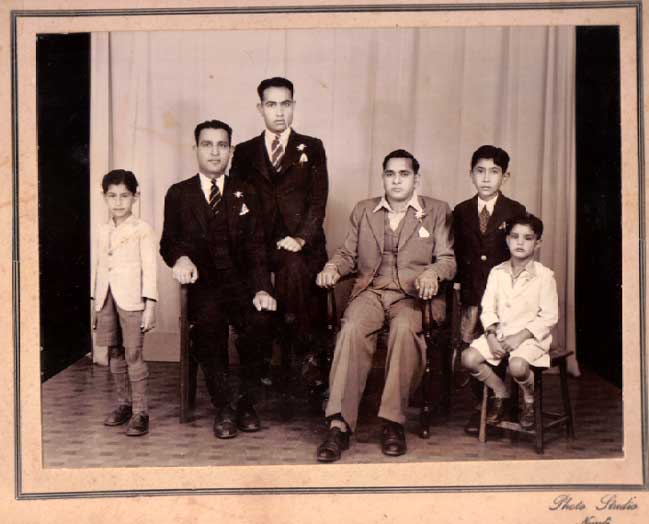
Mahinder Bahl, Amar Nath Bahl,
Jagat Ram (chacha) Thakkar
Madan Bahl
Subhash Bahl my elder bro, late elder brother

Mahinder Bahl,
Lalaji - used to work in the market with Jagat Ram,
Baliram Thakkar, brother of Jagat Ram
D'Souza - used to work in the market with Jagat Ram
Kasturi chacha(our)

Mahinder Bahl, Amar Nath Bahl
Jagat Ram
Bali Ram - both brothers, they also have a third brother also !
standing L-R
Lalaji
Kasturi chacha(our)
D'Souza
Some Gujrati bhai with Jagat Ram
==========================================
|
by ismailimail |
During my three week visit to Africa, the first thing that surprised me about Nairobi was that unlike my home city Karachi you can easily cross the road. Many times, car drivers would stop for you to pass by easily, even in the town. Westlands, where we stayed, was a relatively posh area but when I commuted into the town I could see poverty and more so, courtesy in the craftswomen and sellers. A city that is developing at an ever-increasing pace still had hills, trees, tormented bodies and yet strong souls.

Click here to view amazing shots taken by Raheel Lakhani: http://theproject.raheellakhani.com/richness-of-poverty.html
==============================================
BOOKS ON EAST AFRICA

This interesting book about the exploits of Ameer Janmohammed and his family in East Africa can be obtained from Ameer Janmohammed by e/mailing him at akj85@btinternet.com
FOR DETAILED HISTORY OF THE ABOVE, SEE SITE OF AMEER JANMOHAMED..www.ameerjanmohamed.com

Aficionados of life and adventures in 19th Century Africa. It is guaranteed to reveal at least a hundred facts about East Africa. Written by Khalid Malik "Khalid Malik" khalid4@batelco.com.bh

Title of a book written by Vanoo Jivraj Somia about Indians of East Africa

Stories of Punjabi Muslim Pioneers in Kenya by Cynthia Salvadori

The story of the Kenya-Uganda railway by Neera Kapila

Just Matata - Sin, Saints and Settlers (A Novel Set in Goa and Kenya)

Read review of this book -click on this pdf

A new book by Madhubhai Madhvani about Uganda uprising



